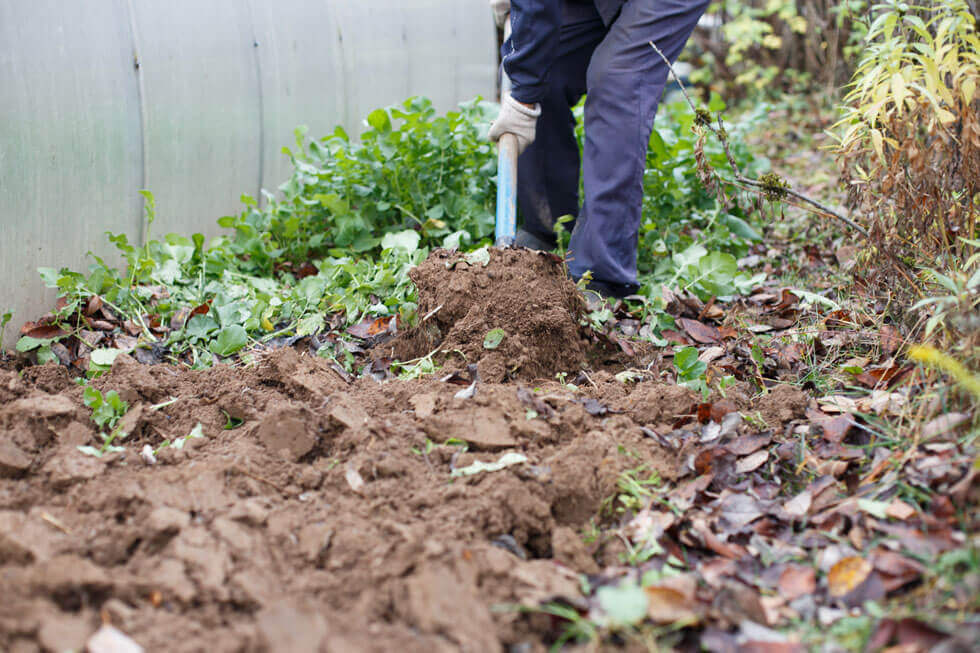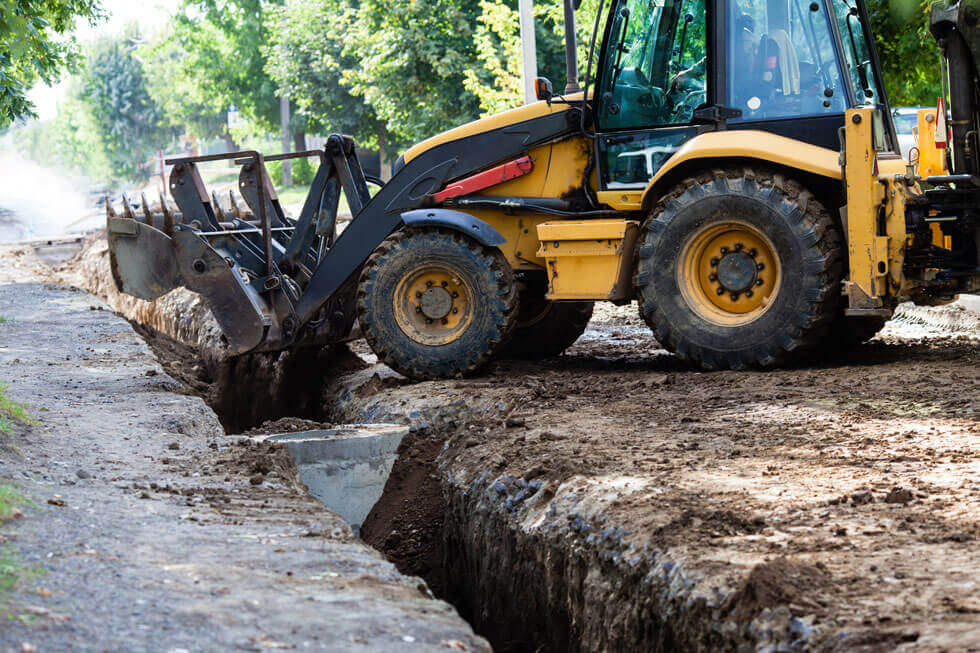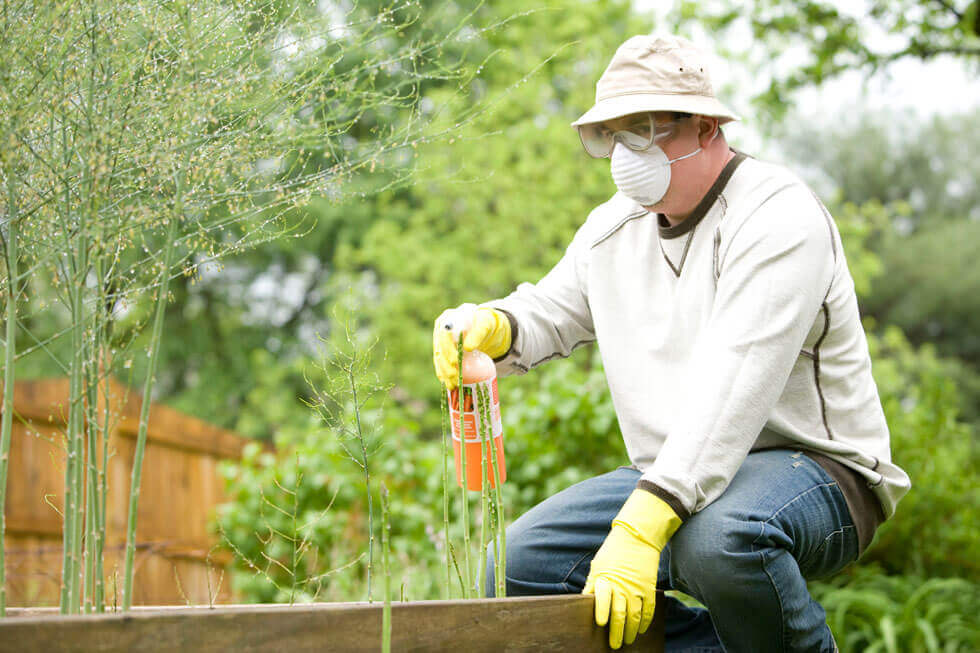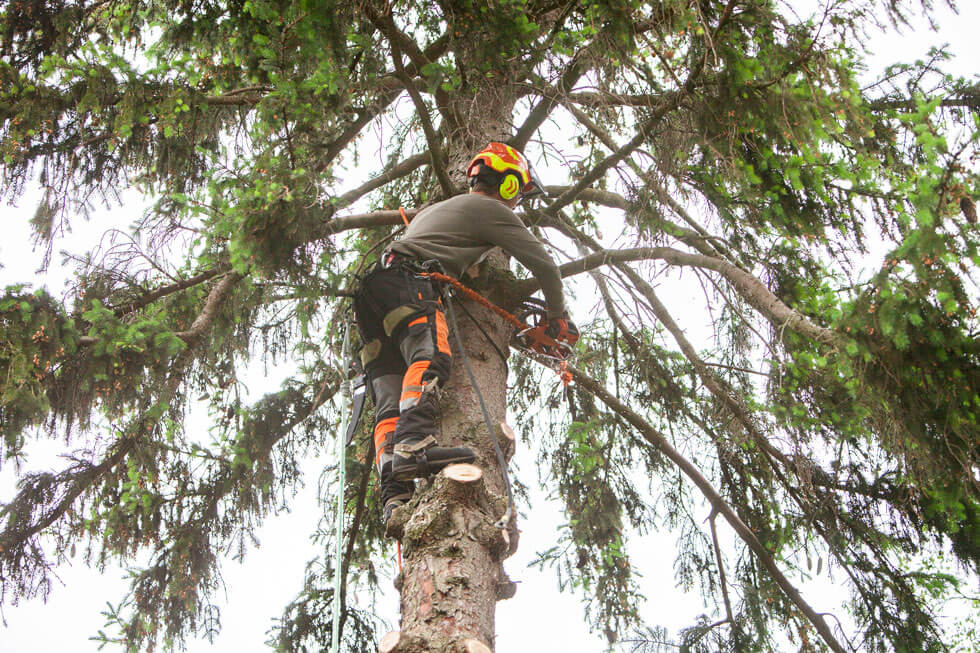More often than not, property owners find themselves grappling with the question of how to kill a tree from the roots. Tree roots, while essential for the vitality and stability of trees, can become invasive and problematic. They may stretch far and wide in search of water and nutrients. Sometimes even encroaching on your home’s foundations, plumbing, and other underground structures. This can lead to significant damage and expensive repairs.
Knowing when to intervene becomes necessary, especially when trees threaten your property’s safety and integrity. This is why this blog post will explore five common ways to kill tree roots and prevent them from wreaking further havoc on your landscape.
Method 1: Physical Removal

Physical removal is a straightforward method of dealing with unwanted tree roots. It involves using various tools and equipment to dig out the tree’s roots directly from the soil.
Here’s how it works:
- Identify the Problem Root: The first step is to locate the problematic root that’s causing issues. This one could be damaging your property or one that’s part of an unwanted tree.
- Dig Around the Root: Once you’ve identified the root, carefully dig around it with a shovel or a pickaxe. Make sure to give yourself enough room to work without damaging the root or the surrounding area.
- Cut the Root: After exposing the root, use a saw or a pair of loppers to cut it. Ensure you cut as close to the tree as possible to prevent regrowth.
- Remove the Root: With the root cut, you can now remove tree roots from the ground. Use a shovel or your hands to pull the root free. Dispose of the root properly to avoid any potential regrowth.
- Fill in the Hole: Finally, fill in the hole you’ve created with fresh soil.
Method 2: Chemical Root Killers
When physical removal isn’t an option, chemical root killers can be an effective alternative. These products are designed to kill and decay tree roots, preventing them from causing further damage or regrowth.
Here’s a step-by-step guide:
- Choose the Right Product: Numerous chemical root killers are available on the market. Some are specific to certain types of trees, while others are more general-purpose. Make sure to read the product labels carefully to ensure you choose one that’s suitable for your particular situation.
- Apply the Chemical: Typically, you’ll need to drill holes into the cut tree trunk or the roots and then pour the chemical root killer into these holes. Follow the instructions on the product label for the best results.
- Wait for the Decay: Once the chemical has been applied, it will work to kill and decay the tree roots. This process can take several weeks, so patience is key.
- Dispose of the Dead Roots: After the roots have fully decayed, you can remove them from the ground and dispose of them properly.
Remember, while chemical root killers are effective, they should be used responsibly to minimize potential harm to the surrounding environment.
Method 3: Root Barriers

Root barriers are effective tools that prevent tree roots from spreading into areas that can cause damage, such as sidewalks, driveways, or underground utilities. These barriers are usually made of plastic or fabric and are buried vertically into the ground to block the path of the roots.
Here’s how it works:
- Identify the Area: First, determine where you want to prevent root growth. This could be near your home’s foundation, around utility lines, or alongside a driveway or patio.
- Dig a Trench: Next, dig a trench along the area where you want to install the barrier. The trench should be deep enough to reach below the depth of the tree roots.
- Install the Barrier: Place the root barrier in the trench, ensuring it stands upright. The top should stick out slightly above the ground level.
- Backfill the Trench: Backfill the trench with the soil you previously dug up. Make sure the barrier is still visible above the soil surface.
Method 4: Natural Remedies
Natural remedies are an environmentally friendly alternative for controlling tree roots. They utilize substances that are often found around the house or easily bought at a local store.
Here’s how you can use natural remedies:
- Epsom Salt: Epsom salt is a common household item that can effectively kill tree roots. To use, drill holes into the tree stump or roots and fill them with Epsom salt, then water. Repeat this every few weeks and then start the tree stump removal process. Remember that removing tree stumps is a delicate process and should be handled with care.
- Rock Salt: Similar to Epsom salt, rock salt can also be used to kill roots. Be careful when using this method, as rock salt can increase soil salinity and harm surrounding plants.
- Vinegar: Does Vinegar kill tree roots? Yes, Vinegar is another household item that can be used to kill a tree’s root system. Mix a solution of equal parts water and vinegar and pour it into the holes drilled into the tree stumps. This is a very old method of killing tree stumps.
Method 5: Professional Solutions

When it comes to figuring out how to kill a tree from the roots, there’s no substitute for professional expertise. Arborists and tree removal experts have the necessary training and equipment to handle complex situations safely and efficiently.
Here’s why you might consider this option when killing tree roots:
- Expert Knowledge: Professionals have extensive knowledge about different tree species and the best methods for dealing with them. They can provide advice on whether a tree should be removed or if there are other options to consider.
- Specialized Equipment: Tree removal experts have access to specialized equipment that can handle large trees and difficult-to-reach roots. This equipment can make the process quicker and safer.
- Safe Procedures: Removing a tree or its roots can be dangerous if not done properly. Professionals are trained to carry out these tasks safely, reducing the risk of property damage or personal injury.
- Clean-up and Disposal: After removing the tree or roots, professionals will also take care of clean-up and disposal, leaving your property neat and tidy.
Safety Precautions

When learning how to kill a tree from the roots, taking some safety precautions is crucial. Dealing with tree roots can be risky, and ensuring your safety should always be the top priority.
Here are some key safety measures to consider:
- Wear Appropriate Gear: Always wear protective clothing when dealing with tree roots. This includes sturdy gloves, safety glasses, and long-sleeved shirts and pants to protect your skin.
- Use Tools Correctly: Whether you’re using a shovel, saw, or stump grinder machine, ensure you know how to use them properly. Misuse of tools can lead to injuries or damage to your property.
- Handle Chemicals with Care: If you’re using chemical root killers, handle them with care. Follow the manufacturer’s instructions closely, wear protective gear and keep them out of reach of children and pets.
- Consider Professional Help: If the task seems too challenging or dangerous, don’t hesitate to call in professional help. An arborist or professional tree service company has the knowledge and equipment to safely and effectively handle tree roots.
Tips for Preventing Future Root Problems
Prevention is always better than cure. Here are some proactive steps you can take to prevent roots from becoming a problem in the future:
- Choose the Right Tree: Not all trees are created equal regarding their root system. Some trees have deep, extensive roots, while others have shallow, spreading roots. Research different tree species before planting to find one that’s less likely to cause root problems.
- Give Them Space: Trees need plenty of space for their roots to grow. When planting a new tree, make sure it’s far enough away from your home, driveway, and other structures to prevent future root conflicts.
- Regular Maintenance: Regular tree maintenance can help prevent root problems. This includes pruning the tree to control its size and inspecting the roots regularly for signs of disease or damage.
- Consider Root Barriers: As mentioned earlier, root barriers can be a great way to prevent roots from spreading into unwanted areas.
- Consult with a Professional: If you’re unsure about the best way to prevent future root problems, don’t hesitate to consult with a professional arborist. They can provide expert advice tailored to your specific situation.
By taking these steps, you can enjoy the benefits of having trees on your property without worrying about potential root problems.
When Does Root Removal Become Necessary?
Beyond the aesthetic implications, when these exposed roots start causing serious damage to your property or compromising other plants’ health, it’s time to consider removal. If a tree’s large surface roots are causing severe soil erosion or if they are encroaching on your home’s foundations or plumbing system, immediate action is necessary. Always remember, prevention is easier than cure when dealing with invasive roots. So, being proactive in managing your plants can save you a lot of trouble down the line.
Conclusion
In summary, understanding how to kill a tree from its roots involves various methods. This includes natural remedies like salt and boiling water, physically removing through digging and cutting, using root-killers for killing trees and hiring professional arborists.
Each approach has benefits, but the most suitable solution depends on tree size, species, and proximity to other plants and structures. Keep in mind that prevention is always superior to cure. By proactively managing trees, you can avoid potential root issues and spare yourself the need to learn how to eradicate a tree from its roots.

